It's not normal to hear a toilet run continuously. Maybe you're trying to figure out what's wrong. And, while troubleshooting, you find that it's a problem you can't fix without a professional. It raises the question, will it increase the electric bill? If that's what you're wondering, let's discuss the details.
No, it won't increase the electric bill. Toilets do not use electricity to operate. However, it will increase your water bill. If you can't fix the problem, it's recommendable to turn off the water supply until someone can.
A toilet is only one plumbing fixture that uses water. Others might increase both your electric and water bill. In any case, it's important to know what to do if one of these fixtures isn't working as intended. To learn more about this topic, keep reading.
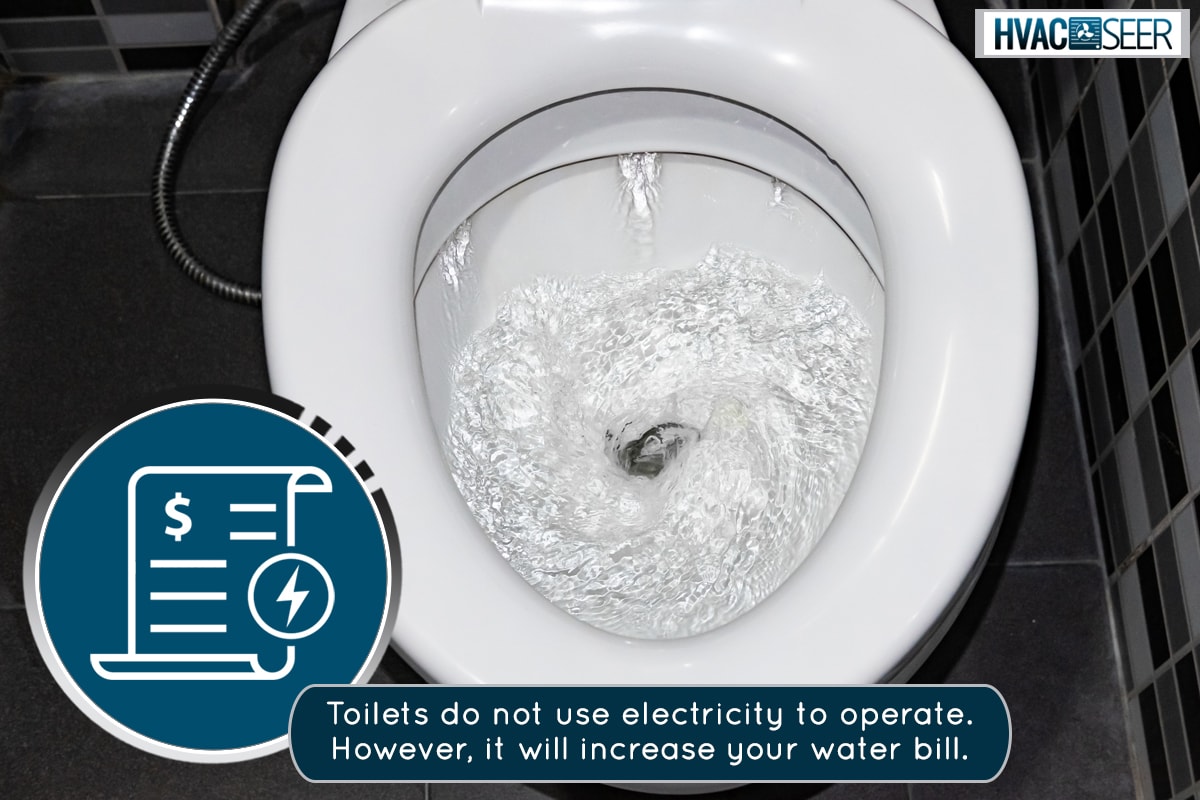
Fixing the Running Toilet Problem
It isn't common to find yourself at odds with your toilet. There might be some clogging issues here and there. But, they are mechanically strong.
Most toilets use the same few mechanical components. It makes troubleshooting a lot easier. However, sometimes the problem is not within our reach to fix.
If your toilet runs constantly, there are a few areas that you can check. Before you start troubleshooting, it's important to know the seriousness of the problem. Yes, a running toilet will increase your bills. It will increase your water bill.
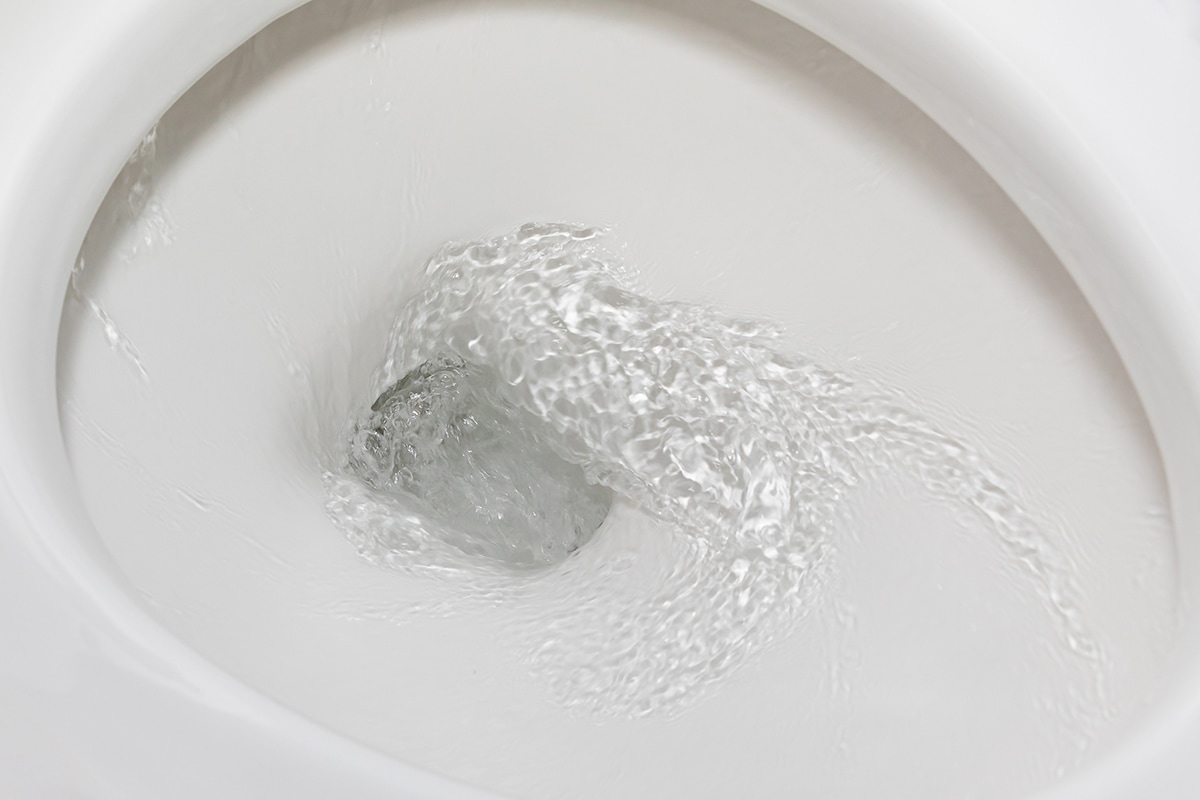
Toilets do not use any electricity to supply themselves with water.
How Much Will A Running Toilet Cost You?
A running toilet can become a headache quickly. Besides the annoying noise it makes, it wastes a precious commodity. It can waste up to 200 gallons of water a day. Of course, that number depends on the flow.
If you don't fix the problem, it will waste about 1,000 gallons of water a month. The added cost to your bill at the end of the month can be as low as 60 dollars. At the highest, you'd be paying 200 dollars extra.
For this reason, it's crucial to address the problem as quickly as possible. With this information in mind, let's discuss how to troubleshoot a running toilet.
How To Fix A Running Toilet
The best way to find a solution is to eliminate the easy culprits first. As mentioned, toilets only have a few mechanical parts that make them function. One component that could cause a runny toilet is the flapper.
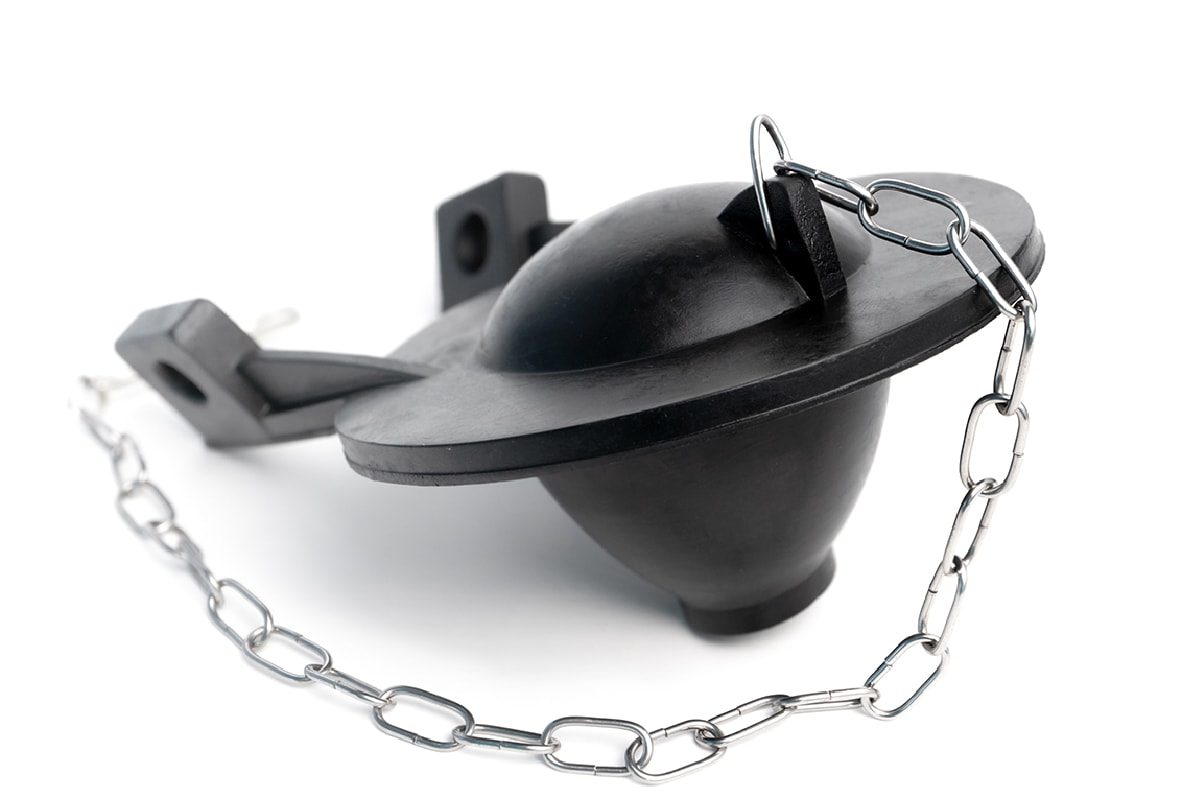
The flapper lets the water flow out of the tank and into your toilet bowl when you flush. Over time, the flapper will become worn out. It could be due to mold, mineral buildup, or bacterial growth.
Click here to see this toilet flapper on Amazon.
Once the flapper deteriorates, it will no longer seal around the flush valve. Water will leak from the tank into the toilet. To solve this issue, you need to replace the flapper.
Flapper Chain
If the flapper is not the culprit, it might be the flapper's chain. When you flush, the chain pulls the flapper open. However, if the chain is too long, it could fall under the flapper.
Consequently, it prevents the flapper from sealing the flush valve. The solution to this problem is simple. You'll only need to trim the chain.
Tying a few knots around the chain can be an easy fix. Otherwise, you might want to use a wire cutter.
High Water Level
Sometimes, the flapper is working as intended. But, the toilet is still running water. In this situation, the culprit could be the water level in the tank.
The flapper connects to a cylinder. This cylinder will have an opening at the top.
It's a part known as the overflow tube. If the water level is too high in the tank, it will flow into the opening. Of course, that's not supposed to happen.
To fix this problem, you'll need to adjust the fill valve. There will be a large screw that you need to turn counterclockwise with a screwdriver. It lowers the float on the fill valve.
As a general rule of thumb, you want the water level in the tank to be 1/2-1 inch below the overflow tube. The design of the fill valve will vary. Some are adjustable without a screwdriver.
Here's a video discussing the components of the toilet and how to repair them:
Replacing the Fill Valve
Click here to see this universal fill valve on Amazon.
After adjusting the height of the fill valve, observe the tank after flushing. If the water level goes above the overflow tube, it's time to replace the fill valve. It's worth noting that you might not be able to do this if you live in an apartment.
It all depends on the terms of your lease. In any case, if you live in an apartment, proceed with caution. Replacing the fill valve should be easy if you follow the steps correctly.
Preparation
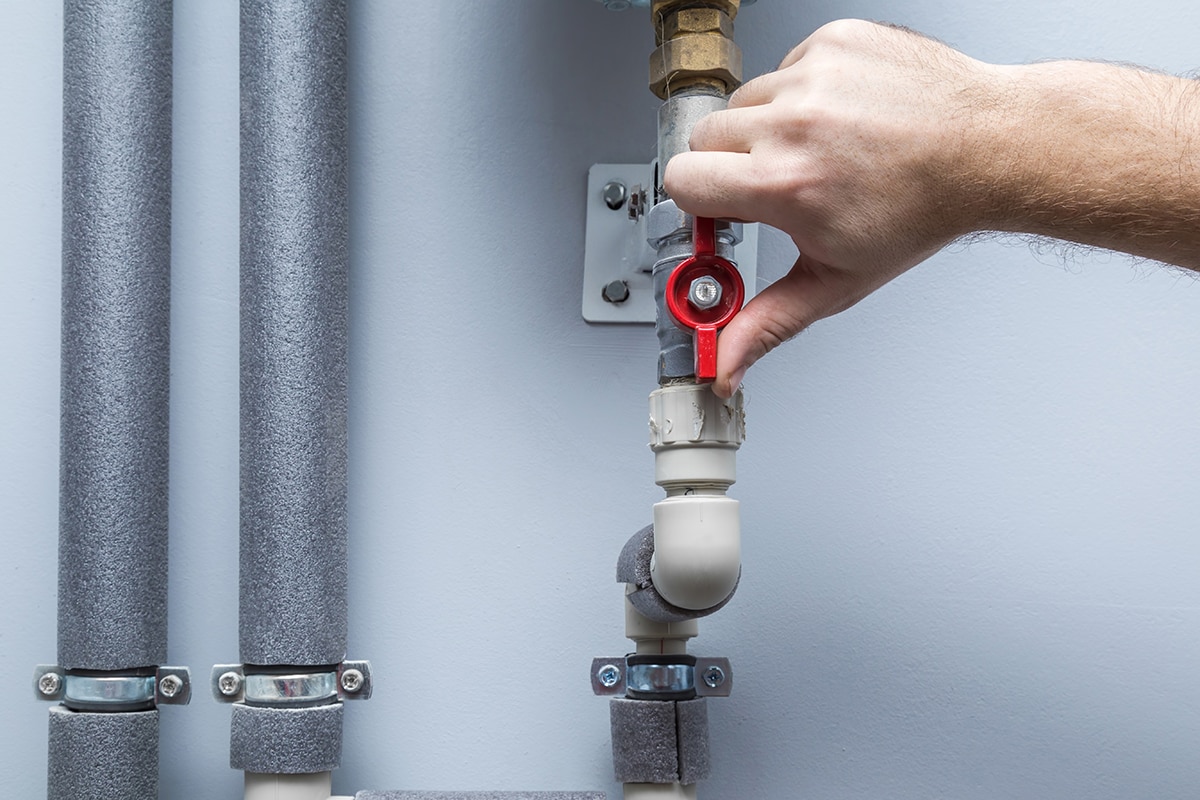
You start by turning off the water supply. There will be a valve behind the toilet. Turn the valve clockwise until it can't turn anymore. The valve should be easy to twist.
So, don't apply more force than necessary. Then, flush the toilet to remove as much water as possible from the tank. You can use a shop vac to remove the excess.
If you don't own a shop vac, use a sponge to soak the water.
Removing the Fill Valve
Place a bowl under the valve near the toilet. There will be a supply nut under the toilet tank. Turn the supply nut counterclockwise to remove the supply line.
Use some pliers to remove the fill valve retaining nut. You'll need to turn it counterclockwise too. The bottom of the fill valve should be free at this point.
All that's left is to remove the fill tube from the overflow. You can remove the entire fill valve out of the tank.
Installing the New Fill Valve
The new fill valve should come with a few components. There will be a rubber washer that you need to place on the bottom of the fill valve. The rubber washer is a disk with a hole in the middle.
It has two faces. One is flat, while the other is in a cone-like shape. The cone side should face downwards.
Then, place the fill valve into the hole of the tank. Secure it with the retaining nut. Tighten it using a pair of pliers. Of course, turn it clockwise without too much pressure.
Reattach the supply line nut. You can hand-tighten it. Finally, attach the fill valve tube to the overflow tube. Turn the water supply back on.
Here's a video demonstrating the process in detail:
What To Do If You Run Out Of Options?
If replacing the fill valve, the flapper, and the flapper chain doesn't work, it's a plumbing issue. You might not have been able to replace the fill valve at all. The reason is that the stop valve wasn't stopping the water supply as intended.
In this situation, it would be best to call a plumber. If your stop valve works, turn the water supply off in the meantime. Only open it when you need to use the bathroom.
This way, you can afford the wait. There won't be any additional cost to your water bill.
What Fixtures Can Increase Your Plumbing And Electric Bill?
As mentioned, toilets only use water. There's no electricity involved in their operation. This statement is true for most situations. Some rely on pumps, which use electricity.
Pump-assisted toilets can increase your electric bill. In this situation, you'd save on electricity if you flush less. Pump-assisted toilets are common in areas that use wells as a source of water.
Water Heaters
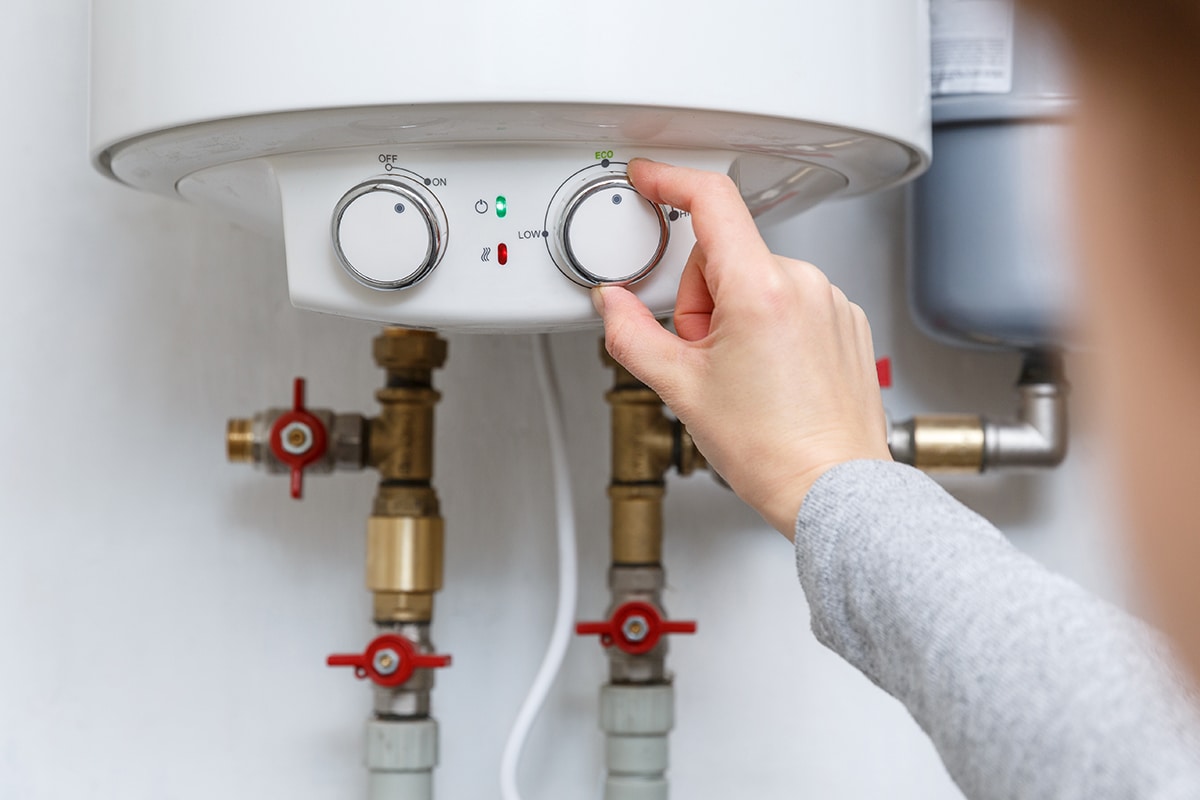
Other fixtures use a combination of both.
It depends on the type of water heater you own. If you own an electric water heater, it could increase your electric bill in some situations. One common culprit is a hot water leak.
Over time, pressure valves will tend to wear out. Once they start leaking, it's equivalent to running hot water 24 hours a day. Leaks will typically appear where the pipe terminates.
The other situations and appliances that can increase your water and electric bills are dishwashers and showers. If you take long, hot showers, your electric water heater will need to keep up with the output.
The longer the water heater runs, the more electricity you use. It's the same principle for dishwashers. Dishwashers use hot water to clean your dishes. If you use them too frequently, it could add up.
For this reason, it's crucial to be mindful of your water usage. Quicker showers and using the dishwasher less frequently can save you money. How impactful the savings are is up to you.
In Closing
Life would be easier if we didn't have any bills to pay. Everything we use comes at a cost. A running toilet won't increase your electric bill. But it will run up your water bill. In any case, good luck with solving the problem!
Before you go, do you have other electric bill concerns? Do you use an electric fireplace? We can help you find out how much electricity it uses. To learn more, check out:
How Much Electricity Does An Electric Fireplace Use?
Do you use a fan frequently? We can discuss that area too. For more information, check out:


